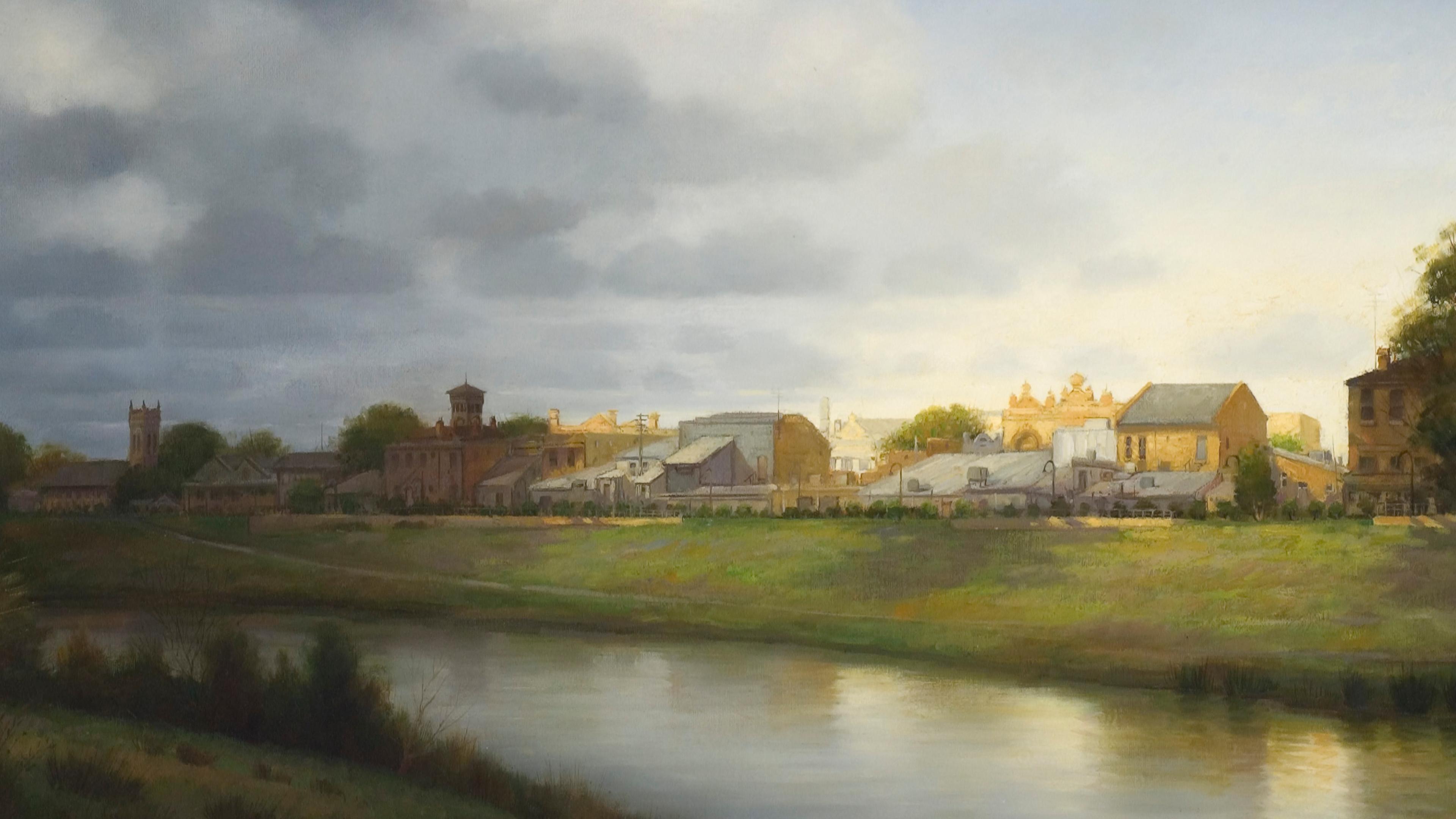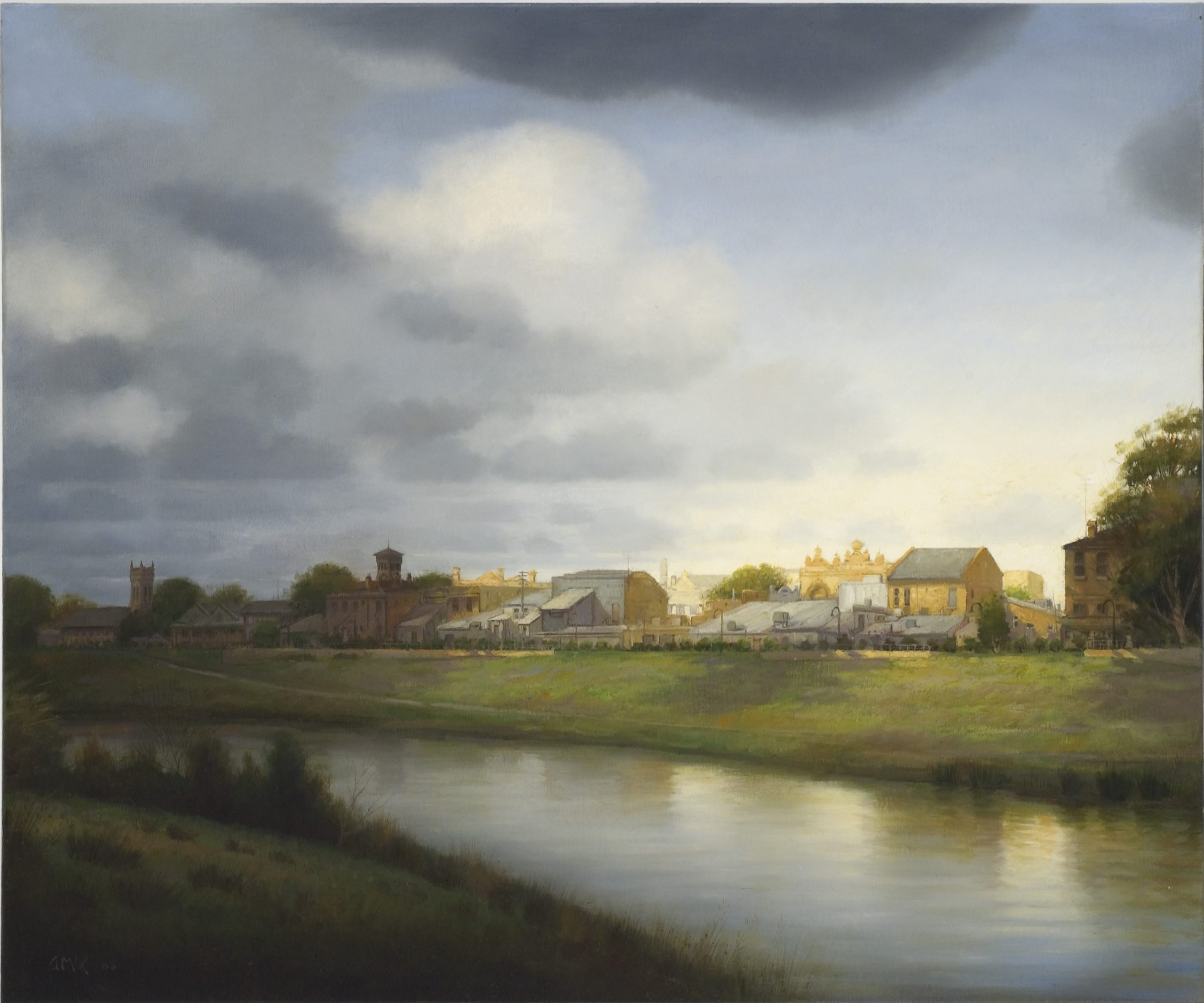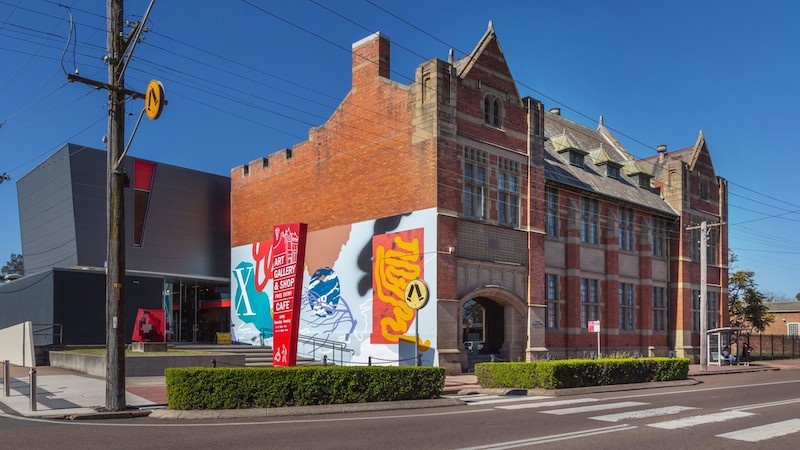Maitland’s Golden Age
Alexander McKenzie, Cloud Cover Over Maitland, 2006
The influence of the Dutch Golden Age of painting is very clear in Alexander McKenzie’s (1971-) Cloud cover over Maitland, painted in 2006. Dutch artists of the seventeenth century conveyed pride in their flourishing cities in paintings such as View of Delft (1633) by Johannes Vermeer, which is the inspiration for this view by McKenzie.
McKenzie has given us a very European version of the regional city of Maitland, which was founded on the banks of the Hunter River in the mid-nineteenth century. The low-lying town squats above the still waters of the river, its skyline ennobled by spires and bell towers that suggest a prosperous town of civic decorum. Even the sky, with its billowing cumulus clouds, suggests the Dutch masters, who offset the flat expanses of the Dutch lowlands with dramatic skyscapes pierced by golden light. McKenzie has depicted Maitland in a moment when the sun breaks through the clouds, illuminating some buildings in a golden glow while casting others in shadow. All that’s missing is a windmill.
This view of Maitland, which was commissioned for the exhibition View of Maitland from the riverbank (with apologies to Jan Vermeer and View of Delft) at Maitland Regional Art Gallery (MRAG) in 2006, is part of a shift in McKenzie’s practice, when he turned from real to imagined scenes. McKenzie painted this view not long after he stopped working ‘en plein air’, or outside. He continues to paint landscapes, but now they are produced from his imagination, resulting in evocative worlds that lead the viewer on an interior journey rather than recording the exterior world. Elements of this imaginative tendency are clearly present in his view of Maitland, which conjures a seventeenth-century European town out of a contemporary Australian city.





